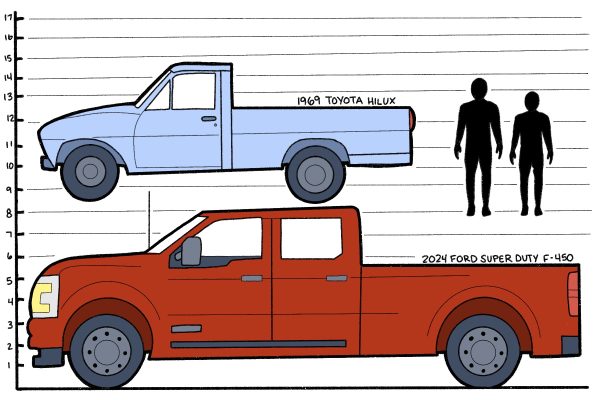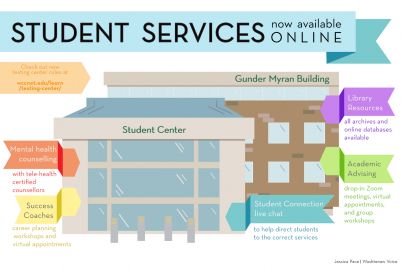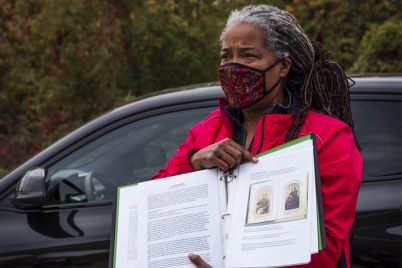
Size comparisons between retro pickups, modern trucks and the average height of men and women in the U.S. Charlie Trumbull | Washtenaw Voice
Charlie Trumbull
Contributor
Trucks have been on the rise in size. What are the impacts of larger vehicles on the road?
What we know
For nearly 100 years, American automakers have been developing innovative pickup trucks. In the 2020s, trucks are more popular than ever.
The car review site Fast Company says in 2000, pickup trucks were about 50% of vehicles produced, but in 2020 that number skyrocketed to 78%.
Production is not the only thing that has grown. Since 2008, vehicles have become larger and heavier. The Center for American Progress states that pickups have increased in weight by about 1,300 pounds since the 90s.
The Director of Infrastructure Policy at the Center for American Progress, Kevin DeGood, told The Washington Post that he noted that cabins have risen further off the ground and blind spots have increased significantly.
Chuck Farmer from the US Insurance Institute for Highway Safety told NPR, “People should not be using [trucks] primarily for commuting because they kill so many other drivers.” Farmer has also made arguments against truck ownership as a whole.
How oversized is oversized?
Following modern trends, Ford is currently selling one of the largest pickup trucks available on the market today.
The 2024 Super Duty F-450 XLT weighs a whopping 8,500 pounds. It has an eight-foot crew cab and a full length of 22 feet from grill to tailgate. The vehicle is nearly seven feet tall, nine feet wide, and six feet two inches high at the grill.
Why have these utility vehicles–originally designed to aid farmers–have become so big, and do non-owners have reason to be concerned?
Fast Company reporter Kevin Krizek notes that when it comes to safety, these vehicles have been shown to cause more deaths than any other vehicle.
None of these heights even reach the top of the 2024 Super Duty F-450’s grill, which means any pedestrian nearby is at a high risk of not being seen by a driver while the vehicle is moving.
Rise in popularity
Mike Crampton, a student in WCC’s Automotive Technology Program, is a proud truck owner. He noticed that trucks are replacing sedans and SUVs on the market and has seen a trend in more trucks on the road.
Crampton owns a Toyota Tacoma Double Cab, which can comfortably seat five and measures over six feet tall.
“I feel like trucks grew in size to accommodate more people, but also in stature,” he said.
Crampton rarely uses his truck for commuting and admits to only ever filling his truck cab with five to six people occasionally.
“I do a lot of hauling and a lot of projects like construction and work on my own house,” he said. “That’s why I have a truck.”
New developments
Crampton cites new technology developments which outweigh a truck’s dangerous size, such as lane assist, blind spot monitoring, 360 cameras and front and rear monitors that can identify when your vehicle is too close to another and will prompt the driver to brake.
Even with all these security features Fast Company states there has been an 89% increase in children being killed by their parents’ colossal trucks since 2009.
Crampton argues that truck accidents are almost entirely up to user error. “It’s pretty difficult to hit someone. You have to really not be paying attention.”


